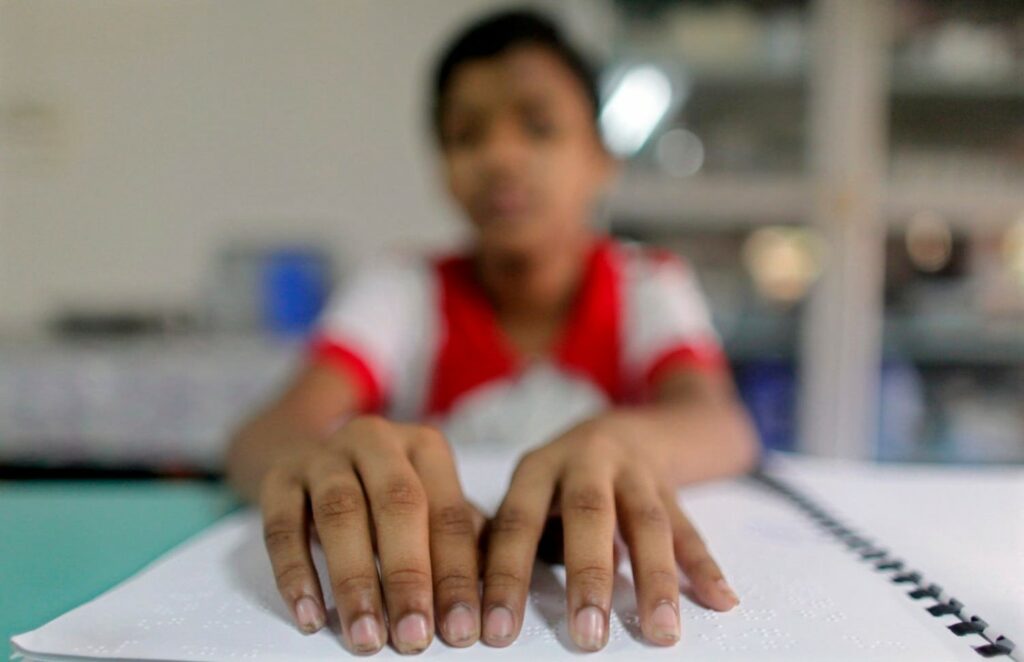Disability-inclusive development: Our path to prosperity
The World Bank has recently launched the Bangladesh Poverty Assessment 2019 report that highlights remarkable progress the country has made in terms of reducing poverty and combating extreme poverty. One of the stirring statistical transformations is on the graduation of nearly 25 million poor people out of poverty in the last 20 years and Bangladesh is being considered as the new “Asian Tiger” with its sophisticated economy. It is uncontested that Bangladesh is signifying a “role model” to developing countries that it is possible to reduce rampant poverty by developing policies and strategies catering to the needs of the population.
However, another striking reality is that about 40 million people are still living in poverty, half of them in extreme poverty. The recent trend shows slowing pace of poverty reduction in the hard-to-reach areas, particularly the extreme poor residing in Rangpur and Dhaka divisions. This is a stark reminder that the poverty fight still remains while Bangladesh embarks on a high-spirited development trajectory. This presents us with the pressing development challenge—”unequal development”. Starting from intensifying inequality to sluggish economic growth, from unemployment to disaster vulnerability, these challenges not only make it difficult to reduce extreme poverty but threaten to reverse the gains. Now is the right time for Bangladesh to intensely analyse who are the “hardest to reach groups” living in extreme poverty.
Poverty and disability
According to the World Bank, 20 percent of the world’s poorest people have disability. Past studies have shown a strong link between poverty and disability. Several years after ratification of the United Nations Conventions on Rights of Persons with Disabilities (UNCRPD), people with disabilities are twice as likely to live in poverty. This compelling fact masks other important differences in the poverty rate among women, people living in extreme poverty, people with lower education and those affected by complex disasters—who face additional economic challenges. People with disabilities have less access to education, skill development and are more often prevented from participating in economic life. They face discrimination while seeking employment and are engaged in the most hazardous jobs, i.e. mining, construction and manufacturing that might trigger disabling consequences.
In Bangladesh statistics vary, but 2010 data from the Bangladesh Bureau of Statistics (HIES survey) gives a 9.07 percent prevalence rate. Social exclusion is widening here due to negative attitudes, prejudices and discrimination against disability. People with disabilities have remained passive recipients and scarcely benefit from health, educational and employment schemes of government. Another 2011 World Bank study conducted in 15 developing countries including Bangladesh showed disability prevalence at 23 percent among women, compared to 10 percent among men, which gives a gender gap of 13 percent points. Looking at all the dimensions of economic wellbeing: education, employment, assets/living conditions, household expenditures, one can see that the same research shows that disabled persons are significantly worse off in two or more dimensions due to additional expenses. The poverty rate is highly correlated with lower educational attainment and lower employment rates among people with and without disabilities.
Bangladesh’s context
After ratification of the UNCRPD in May 2007, Bangladesh has made notable progress in the disability sector. The Disability Rights and Protection Act and Neurodevelopmental Disability Protection Trust Act -2013 fully recognise the principles of the convention, and widened the definition of persons with disabilities, recognising the intersectionality within disability, eliminating derogatory practices and attitudes. Consequently, the 7th Five Year National Plan and other sectorial policies for Education, Skill Development have some provision on disability. Besides, Bangladesh is highly committed to achieving Sustainable Development Goals by 2030, thus reduction of poverty, acceleration of socio-economic development and building of accessible infrastructure have been the government’s priority.
Despite these positive commitments, rampant poverty exists among people with disabilities in both rural and urban areas of Bangladesh. The most economically backward population such as disabled people living in marginalised areas, disabled women and people with profound disabilities lack proper education, employment and other essential services. There is strong mayhem in the implementation of disability policies and countless people with disabilities and their families are caught in endless poverty cycle.
Possible step forward
As poverty and disability contribute to limiting the capabilities of the poor people, there is a need for targeted and mainstream social development policies/programmes to dismantle this nexus and break the vicious cycle of poverty. Bangladesh government and its development partners need to play a vital role in undertaking advance studies for creating economic opportunities, providing financial and business literacy and specific support for economic empowerment, improving skills and vocational training and guaranteed employment in private and public jobs for persons with disabilities. The emphasis should also be laid on quality inclusive education, development of professional skills that enable both women and men with disabilities to pursue career, ensure loss of economic burden for the country and create a roadmap to economic freedom.
Ministry of Social Welfare is working tirelessly to build better future for people with disabilities in Bangladesh, but nothing great can be achieved in silos. The disability allowances and social protection packages need revision for allowing disabled persons to purse economic opportunities.
Local administrations are central for improving the situation of people with disabilities. Thus, we need to build capacities of Wards, Union Parishads and Upzilas to promote disability-inclusive development. For that, effective collaboration with local disability groups and disabled people’s organisations (DPOs) is the necessary first step.
The government and relevant stakeholders therefore, must work together for ensuring disability inclusive development through active participation of people with disabilities/DPOs in all relevant discussions and planning processes. As Professor Stephen Hawking rightly said, “disability need not be an obstacle to success.” If the government and its development partners are dedicated to removing barriers that people with disabilities face, it will be a turning point for inclusive and economically prosperous Bangladesh.
Sudarshan Neupane is an Australian Awards Alumni from Nepal, currently associated with Humanity & Inclusion in Bangladesh.
Email: sudarshan.neupane@hotmail.com
Source: The Daily Star.

